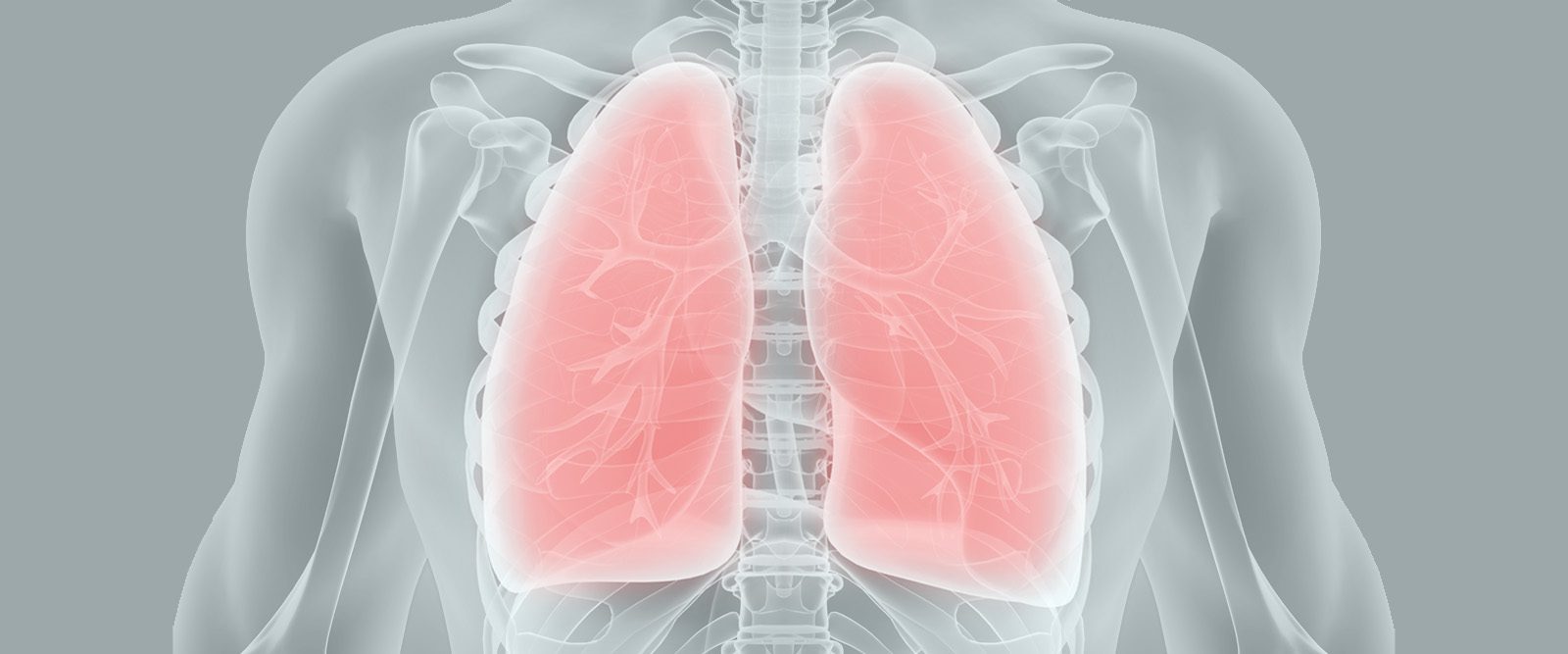Who Can Get Screened for Lung Cancer?
A radiologist shares what to know about the updated screening guidelines for lung cancer, the leading cause of cancer death in the United States.

The American Cancer Society (ACS) recently updated its lung cancer screening guidelines, which will make about five million more people in the United States eligible for annual screening.
The guidelines now recommend lung cancer screening — done with a low-dose computed tomography (LDCT) scan — for people age 50 to 80 years, who currently or formerly smoked, and have a 20-plus pack-year history. A pack-year is how many cigarettes smoked divided by years smoked. For example, people who meet the age criteria and have smoked a pack a day for 20 years — or two packs a day for 10 years — would be eligible for screening.
Previously, a person had to be between age 55 and 74 and have a 30-or-more pack-year history.
Another key change is that the number of years since a person quit smoking is no longer a qualifier to start or stop screening, according to the ACS. Now, a person who used to smoke, with at least a 20 pack-year history, is considered to have a high risk for lung cancer whether they quit yesterday or 20 years ago, the updated guidelines note. They should be recommended for yearly screening.
In the U.S., lung cancer is the second most common cancer after skin cancer. Women have about a one in 17 chance of developing it in their lifetime, estimates the ACS, while men have a one in 16 chance. It is also the leading cause of cancer death in the nation: Every day, about 350 people die due to lung cancer, which is more than breast, colon, and prostate cancers combined. The updated screening guidelines aim to reduce the number of deaths from lung cancer.

Dr. Bradley B. Pua
Lung cancer is easier to treat when caught early because it is small and localized to the lungs, underscoring the importance of screening, says Dr. Bradley B. Pua, a vascular and interventional radiologist and director of the lung cancer screening program at NewYork-Presbyterian/Weill Cornell Medical Center.
“The updated guidelines allow for more people to get screened, in order to make an early diagnosis, which is imperative to save lives,” he says. “There is a significant difference between the survival outcomes for stages I to II compared to stages III and IV of lung cancer. Even with our best treatments, the five-year survival rate for advanced lung cancer is about 15% to 20%, compared to 90% to 95% if it is found at stage I.”
u003cstrongu003eThe high-risk populations and a rise in early-onset lung canceru003c/strongu003e
Getting screened reduces the lung cancer death rate by at least 20%, but screening for the disease has been drastically low compared to other cancers, according to the American Lung Association. Only 5.8% of people at high risk for lung cancer get screened each year, whereas about 76% get annual mammograms to screen for breast cancer and around 72% get colonoscopies to screen for colorectal cancer.
“When looking at breast and colorectal cancer, we know who are at risk, what we need to screen for, and at what age, but lung cancer is unique,” says Dr. Pua. “We need more data to see who the at-risk population is, besides people with a history of cigarette smoking, so that we can make guidelines broader.”
One challenge is that while the ACS has updated their recommendations, the U.S. Preventive Services Task Force has not updated its guidelines, which are the ones the Centers for Medicare & Medicaid Services use to determine coverage. The only difference between the guidelines is that the Task Force does not recommend screening for people who have not smoked in 15 years.
However, Dr. Pua believes that since older people are at increased risk for lung cancer, it’s important to be screened no matter how long they’ve quit for. “Multicenter trials that have been done not only in the U.S. but in Europe and Asia show that if we look at people who are age 50 to 80 years, who have a 20 pack-year history or more, are a current or former smoker — whether they quit yesterday or 20 years ago — that the benefit of screening those individuals outweigh the risks of results that find something that is not cancer,” says Dr. Pua.
In addition, while a small number of people diagnosed are younger than 45, new studies have found a rise in early-onset cancer. Recently, a study published in JAMA Oncology found that there is a slight rise in lung cancer among younger women, though more research is needed to understand why.
“There are many people who feel that the lung cancer screening criteria is too strict because there are going to be people who develop lung cancer that have never smoked,” says Dr. Pua. “We see cases in people with other risk factors, such as a strong family history and exposure to secondhand smoke or to radon in the past. But there isn’t enough data yet to support the screening of those individuals.”
According to the Centers for Disease Control and Prevention, cigarette smoking is linked to about 80% to 90% of lung cancer deaths, making it the number one risk factor for lung cancer. But each year, about 20,000 to 40,000 cases happen in people who have never smoked or have smoked fewer than 100 cigarettes in their lifetime. Secondhand smoke contributes to around 7,300 of these cases, for example, and radon to about 2,900.
u003cstrongu003eWhat people should know about screeningu003c/strongu003e
In terms of LDCT scans, there are a few things to be aware of, says Dr. Pua. “First, even though it is low-dose radiation, it is still radiation,” he says. “But the radiation risk is minimal and not what we’re concerned about.”
“What we are worried about with screening is incidental findings,” adds Dr. Pua. “We are careful in only screening individuals who we feel are at risk. Because if you screened everybody, you would find things that are not lung cancer that would lead to testing that is not needed and potentially harmful.”
The LDCT scan is non-invasive and done within a few seconds, says Dr. Pua. “The radiologist will ask the patient to take a deep breath and hold it for a second or two and then an image is taken.”
A patient is notified of their findings from the screening and health care providers will recommend next steps. Recommendations, specifically at the lung cancer screening program at NewYork-Presbyterian/Weill Cornell Medical Center, are made by a multidisciplinary team of pulmonologists, thoracic surgeons, oncologists and radiologists.
“In our program, if someone has positive results from screening and is diagnosed after a biopsy, we can get them into surgery if they need it within two weeks, which usually takes a couple of months,” says Dr. Pua. “Screening is important, but it’s also key to have a multi-disciplined team that works closely together and with the patient to decide quickly on next steps.”
Dr. Pua advises reaching out to a screening program if you have any questions or concerns about lung cancer. “It does not mean that you are agreeing to getting a LDCT scan,” he says. “It is just a way to find out more. Often, we have people come in for the shared decision-making because they are curious about screening. That’s what we are here for – to offer that type of counseling as part of the screening program.”
Bradley B. Pua, M.D., is a vascular and interventional radiologist and director of the Lung Cancer Screening Program at NewYork-Presbyterian/Weill Cornell Medical Center. Dr. Pua’s clinical expertise is in interventional radiology and performs a variety of interventional procedures including but not limited to: arterial embolizations, stent placements, tumor ablations, biopsies and vascular access. His interests include both pediatric interventions and minimally invasive cancer therapy, with a particular focus on lung tumors.
